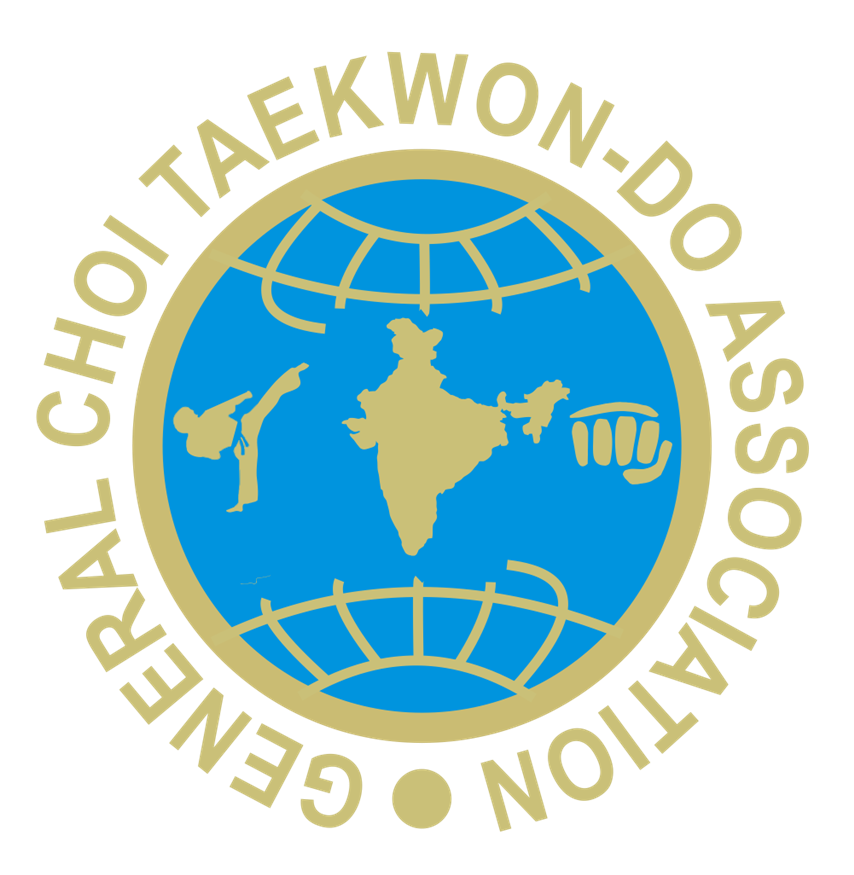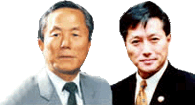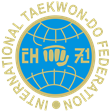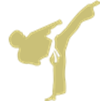General Choi Hong Hi
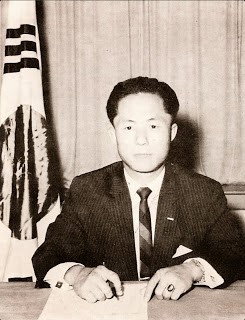
Our Founder, General Choi Hong Hi, (2 Star) Major-General (Army Serial #10044)
Ambassador Choi was the “principle founder” of Taekwon-Do as credited by the Encyclopedia Britannica. As a founding member of the south Korean Army he taught martial arts to the soldiers assigned to him from 1946. He named Taekwon-Do and promoted it endlessly as the Korean Martial Art of Self Defense. He was the Vice President of a short-lived Taekwon-Do Association of Korea in 1957. He formed the Korean Taekwon-Do Association (KTA) in 1959 and served as the first President. Also in 1959 he wrote the first book on Taekwon-Do and led the Military Taekwon-Do Demonstration Team to Vietnam and Taiwan, marking the first time ever Taekwon-Do was performed abroad.
General Choi would devise 26 Patterns or Tuls. These were the first Korean forms ever created. In 1962 he personally introduced Taekwon-Do to Malaysia when he was assigned there as the first Korean Ambassador. In 1965 he led a Korean government sponsored Kukki Taekwon-Do Goodwill tour around the world. The tour formed the base in 1966 for creating International Taekwon-Do Federation (ITF), the world’s first global governing body for Taekwon-Do. This marked the first time ever that Korea was home to any international organization. The ITF would grow to have millions of members in well over a hundred countries and he would preside over 17 of their World Championships during his lifetime. General Choi traveled the world tirelessly to teach and promote the original Taekwon-Do. He authored 5 books on the subject, many of which had numerous editions and several reprints. His written works have been translated into at least 8 languages. He also oversaw the development of various sets of electronic recordings of what he created; making it the most documented Martial Art ever.
Background & Accomplishments
General Choi Hong-Hi was born in 1918 in Hwa Dae Ri, Ham Kyung Buk Do, a Province in the northeastern part of Korea near Cheongjin. It is important to note that when General Choi was born, Korea was a unified Nation. However Korea was suffering under a brutal occupation by Imperial Japan. Koreans often refer to this time as the “Dark Period.” When he was born Korea utilized the Lunar calendar. Using the Lunar calendar his birthday was November 9, 1918. However on the Western calendar it was December 22. However General Choi preferred to celebrate his birthday on November 9 on the Western calendar, thus combining the two cultures he would come to live within.
General Choi had been exposed to stories and some basic Taek Kyon techniques to bolster his health and confidence when he studied Calligraphy as a frail teenager. Ironically his Father sent him to study Calligraphy and the Chinese classics as he was expelled from his local Japanese controlled school for participating in protests as a youngster. This demonstrated early on his stubbornness, strong independence streak, affinity for justice and anti-Japanese sentiment, the latter influenced by his Father’s feelings that they shared. Years later as he grew older he went to Japan to further his academic education. While there he would go onto earn a II Dan Black Belt in a form of Shotokan Karate. Independent sources confirm that he did indeed teach Karate in Japan at a YMCA before returning home to Korea.
As World War II was winding down, the Japanese who were now clearly losing, resorted to forcefully conscripting Korean males into military service. Once drafted into service through no volition of his own, a young Choi Hong-Hi became involved in a plot to overthrow the Imperial Japanese Colonial Government. Eventually the plotters planned to join what some called the Northeast Anti-Japanese United Army and the efforts of Korean guerrilla warrior Kim Il-Sung, who rose to be a commander of their underground resistance and independence movement. He was high on the Japanese most wanted list. The success of this movement and Korean resistance army was aided by the availability to move back and forth across the borders of China and the Soviet Union that were located in this northeast region of Korea. Traitors who were Korean collaborators reported the plans and General Choi and others were jailed. While he was imprisoned he trained in his Karate and at times even instructed the prison guards, as verified by a fellow inmate who was involved in the plot and also held in confinement as a jail mate.
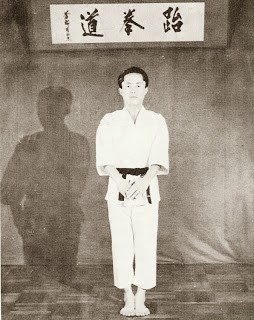
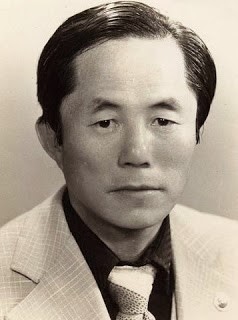
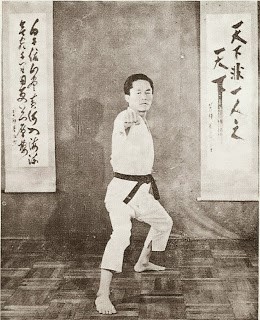
The end of WWII spared General Choi and he was released from captivity in Pyongyang. He went to Seoul and became instrumental in helping to set up the south Korean government, advocating for democratic national control and against communism. As a young 2nd Lieutenant he started to teach his soldiers Karate under the Tang Su Do label. As this Junior Officer moved up the ranks, he continued to spread this through not only his personal teaching efforts, but he also later recruited Korean Martial Artists to become instructors to teach the growing number of soldiers under his command. Even when he traveled to the United States for military training as early as 1949, he took the opportunity to display his martial art (most likely first Korean to do so).
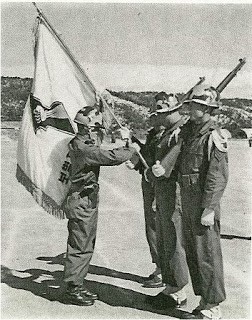
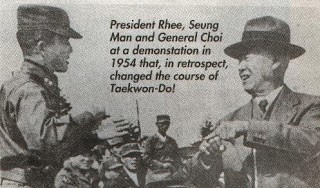
A prime example of this initiative to teach the martial arts to his soldiers was when as a General he was tasked to form a new Division on JeJu Island. The 29th Infantry would become known as the “Fist Division”. It was here that he had Lieutenant Nam Tae-Hi and Sergeant Han Cha-Kyo, members of the Chung Do Kwan transferred under his command and assigned to teach the Martial Arts to the soldiers of this new Infantry Division. The use of General Choi’s fist on the Division Flag and emblem was symbolic of the Martial fighting spirit the young General wanted to instill in his Troops. A monument was erected on JeJu Island to commemorate the historic “Fist Division” inauguration. This monument contains the Calligraphy of Gen. Choi, labeling and teaching about that Martial Spirit. As a result of this history JeJu Island has come to be known as the “Womb of Taekwon-Do”.
When this famous Division completed their training they moved to mainland Korea. General Choi arranged for a martial art demonstration for the south Korean President Dr. Seung-Man Rhee, PhD. The performance was in honor of both the President’s birthday and the 1-year anniversary celebration of the “Fist” Division’s formation. Their exhibition was so successful that the President stated that this should be taught to all the Troops! Dr. Rhee had also called what they showed Taek Kyon, an indigenous Korean martial folk game that predated the Japanese occupation. General Choi however knew that is was more correctly called Tang Soo Do. This event provided motivation to find a new name for what would become a Korean Martial Art of self-defense.
Later in the fall and winter of that year (1954) General Choi, utilizing both his advanced education and Calligraphy skills that involved extensive knowledge of Chinese characters and language, searched for and later conceived of the new term Tae Kwon Do. This label more accurately reflected the shifting emphasis on the use of the legs for kicking. It of course had a word for fist, but like the “Fist Division,” a hand formed into a fist signified strength. So Kwon was joined with Tae to describe the physical parts of their Martial Art. General Choi gave directions to his instructors to have the soldiers shout TAE KWON when saluting, to help cement usage of the new name. This tradition is still carried on by millions of students following the ITF even today every time they bow.
After General Choi created the new name of Taekwon-Do, he then engaged in several attempts to unify the civilian Martial Art Kwans as he had obtained the south Korean President’s approval as evidenced by the Calligraphy of Taekwon-Do that Dr. Rhee penned with his own hand. In 1957 he became the Vice President of a short-lived Taekwon-Do Association of Korea. The president of the Association at that time was a non-martial artist and politician named Lee Jae-Hahk. Then Master Son Duk-Sung the instructor of the Chung Do Kwan served as the Secretary General. General Choi also served as the honorary Kwan Jang Nim of the Chung Do Kwan, after their founder Grandmaster Lee Won-Kuk moved to Japan in 1950 to escape political maltreatment. The Chung Do Kwan was one of the 1st Korean Martial Art Kwans to open post WWII in Korea. It was a very influential Kwan and many of their members staffed General Choi’s military training programs as instructors and senior leaders.
In 1959 he led the 1st Taekwon-Do Demonstration Team abroad when he took the team to Vietnam and Taiwan in March. That same year he established and became the first Director of the Martial Art Department in the Army. On September 3rd, 1959 he formed the first Korean Taekwon-Do Association and served as the initial President. A couple of months later he authored the first book ever on Taekwon-Do, written in both Korean HanGul and Chinese HanJa. This book documented the first five Korean Patterns he created along with the assistance of the soldiers under his command. (Hwa-Rang, Chung-Mu, Ul-Ji, U-Nam and Sam-Il). This historic book is on display in the museum history section of the Taekwondowon in MuJu Korea.
General Choi would go on to author several other books, including the 1972 textbook that became known as the “bible of Taekwon-Do”, the unprecedented 15 Volume Encyclopedia of Taekwon-Do in 1983, several condensed versions of that work, his 3 Volume Set of Memoirs, as well as a Guidebook on Moral Culture. His written texts have been translated into Korean, Chinese, English, German, Spanish, Russian, Japanese and Dari (Farsi or Afghan Persian). He has received at least 3 Doctorate Degrees “honoris causa,” numerous awards and honors for his global work on Taekwon-Do including a Korean Government Sports Award in 1968.
(PhDs was awarded in 1992 Physical Education, 1999 Sports Science, 2001 Philosophy)
While still Ambassador to Malaysia he flew to Vietnam in 1964 to introduce his new Tuls to the Korean Military Instructors there for further dissemination. He also sent the manuscripts back to Korea where they were instituted there as well. After completing his diplomatic assignment he returned to Korea and in January of 1965 was elected the 3rd President of the Korean TAE SOO DO Association. He was successful in getting them to change the name to Tae Kwon Do by August of 1965, by a reported 1-vote margin. He then led as Ambassador-At-Large a Korean Government sponsored Kukki Taekwon-Do Goodwill Tour around the world later in the fall of 1965. On that global tour he also distributed his English book on Taekwon-Do: The Korean Art of Self Defense. This was the first book on Taekwon-Do written in the English language.
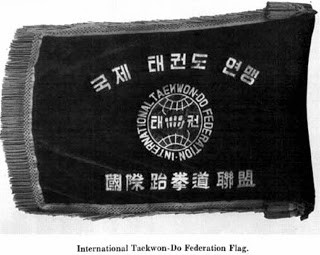

Ambassador Choi moved the ITF Headquarters to Toronto Canada, a city that is a very diverse major metropolitan area in North America. This new location afforded him a geographically advantaged position half way between Asia and Europe, as well as due north from South America and the Caribbean. Strategically this would help to further the internationalization of Taekwon-Do as a global martial art. Canada would also be the host for the upcoming Olympics, something that General Choi desired to have his Taekwon-Do become part of.
In 1985 he again relocated the ITF Headquarters to Vienna Austria. Vienna is located in Central Europe and Austria maintains a long-standing neutral posture that allows equal access politically. This was especially important during the “Cold War” era and the days of the “Iron Curtain” divide of Europe and the global political polarization that resulted from competing political ideologies. This brilliant move helped Ambassador Choi to further his dream of spreading his Taekwon-Do all around the world, without regard for political ideology, national boundaries, race, religion or creed. A vision that he lived to see come true!
Today there are numerous national headquarters, national and allied associations of the ITF all around the planet. This is living proof of the fact that his dream was indeed realized.
After a life dedicated to the development of Taekwon-Do, a modern martial art based on traditional values, philosophy, and training, General Choi, Founder of Taekwon-Do and President of the International Taekwon-Do Federation, died on June 15th, 2002, in the country of his birth.

General Choi Hong Hi, Founder and President of the International Taekwon-Do Federation died on June 15th, 2002, in Pyongyang, People’s Democratic Republic of Korea.
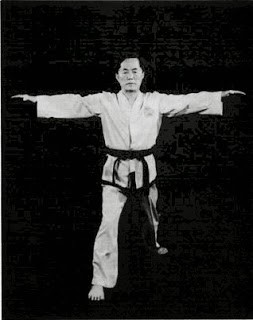
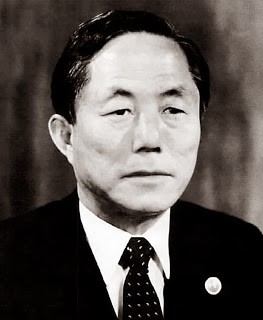
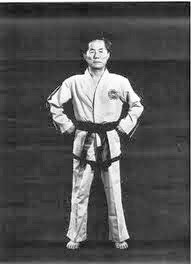
Gen. Choi Highlights
A Partial Chronological Listing
- A founding member of the ROK Army he taught Korean Martial Arts under the then popular Tang Su Do label to soldiers under his command since 1946
- 1949 He traveled to the America for military training & took the opportunity to display his martial art there (most likely 1stKorean to do so)
- 1953 formed the 29thInfantry “Fist” Division on JeJu Island using Korean Martial Arts to build character, strength, fighting skills and instill esprit de corps
- 1955 (April 11) After conceiving the Taekwon-Do name he obtained the official authorization from the 1stROK President Dr. Rhee Syngman, Ph.D
- 1955 created the 1sttwo Korean Tuls or forms, then called Hyungs, Hwa Rang Tul & Chung Mu Tul, he would go onto to create 26 in total, all named after great Korean Patriots or significant events & themes in Korean history & culture
- 1957 Vice President of the short lived Taekwon-Do Association of Korea
- 1959 (March) Led the Military Taekwon-Do Demonstration Team to Vietnam & Taiwan; the 1sttime ever Taekwon-Do was exhibited abroad
- 1959 (September 3) Formed the Korea Taekwon-Do Association & was elected 1stPresident
- 1959 (October) Wrote the 1stbook ever on Taekwon-Do
- 1959 Established and became the 1stDirector of the Martial Art Department in the Army
- 1961 Opposed the use of the new compromise name of TAE SOO DO & continued his development under the Taekwon-Do Banner
- 1962 Personally introduced Taekwon-Do to Malaysia when assigned there as the 1stKorean Ambassador
- 1963 (July) Formed the Malaysian Taekwon-Do Federation
- 1964 Formed the Singapore Taekwon-Do Association
- 1965 Vietnam Taekwon-Do Association formed
- 1965 (January) Elected as the 3rdPresident of the Korean Tae Soo Do Association
- 1965 (August) Successful in lobbying for changing the name to Taekwon-Do
- 1965 Wrote the 1stEnglish language book on Taekwon-Do
- 1965 Led a ROK Government sponsored Kukki Taekwon-Do Goodwill Tour around the world
- 1966 (March 22) Formed the International Taekwon-Do Federation (ITF) in Seoul, Korea with the consent of 9 Nations around the world
- 1967 Awarded the 1stClass Distinguished Service Medal by the Government of Vietnam
- 1968 Introduced Taekwon-Do to C.I.S.M. as the Chief Delegate for Korea at their meeting in Paris, France
- 1968 Korean (ROK) Government Sports Award
- 1969 Published the 1stever Taekwon-Do Magazine
- 1972 Wrote a Textbook that was commonly referred to as the “bible of Taekwon-Do” – 6 Editions & 2 reprints up until 1986, 1streprint needed the next year (73)
- 1972 Moved the ITF Headquarters to Toronto Canada, a diverse major metropolitan area in a democratic Country strategically located in the center between Asia & Europe, as well as due north of South America & the Caribbean to help further facilitate the global spread of Taekwon-Do without regard to politics
- 1974 Hosted the 1stITF World Championships in Montreal Canada, which was the 1st ever World Championships outside of Korea which demonstrated that Taekwon-Do was truly an international sport & there they introduced 4 categories of competition, as well as team events, to help insure the Overall World Champion was a complete martial artist
- 1978 The ITF World Championships were held in Oklahoma City, USA & expanded to female competitors for the 1sttime ever in any World Championships
- 1981 The ITF World Championships were held in Argentina; the 1sttime ever a world championship was hosted in South America
- 1983 Completed the 15 Volume Set of Encyclopedia of Taekwon-Do, a written work truly unprecedented in the martial arts world which has at least 5 Editions or printings
- 1984 The ITF World Championships were held in Scotland; the 1sttime ever a Taekwon-Do world championship was hosted in the United Kingdom or a Commonwealth Nation
- 1985 Relocated the ITF Headquarters to Vienna Austria, a democratic Nation as Vienna is located in Central Europe and Austria maintains a long-standing neutral political posture, thus enabling him to continue his vision to disseminate Taekwon-Do without regard to nationality, politics, religion, race, creed or national boundaries, a personal dream he lived to see come true
- 1987 The ITF World Championships were held in Athens, Greece; the 1sttime ever a Taekwon-Do world championship was hosted in Greece
- 1988 The ITF World Championships were held in Budapest Hungary; the 1sttime ever a Taekwon-Do world championship was hosted in a communist country
- 1988 Published a Condensed Version Single Volume Book of his previously published Encyclopedia of Taekwon-Do which presently has at least 6 Editions
- 1989 Named “Man of the Year” by Tae Kwon Do Times Magazine
- 1992 Honorary Doctorate Degree awarded by the State Central Institute of Physical Education of Russia in Physical Education,
- 1993 The ITF Junior (under 18) World Championships were held in Moscow, Russia the 1sttime ever a Taekwon-Do world championship was opened to the junior age competitors
- 1999 Nominated for the Nobel Peace Prize by Canada, his adopted homeland
- 1999 Formed the International Martial Arts Games Commission in Argentina, an Olympic type of event limited to just the fighting arts
- 1999 Honorary Doctorate Degree awarded by the D.P.R. Korea State Commission on Academic Degrees & Titles in Sports Science
- 2000 Wrote Moral Guide Book
- 2000 Published a 3 Volume Set of Memoirs titled Taekwon-Do and I
- 2001 Honorary Doctorate Degree awarded by Moldova State University in Philosophy
- 1918-2002 Received numerous other awards and honors for his global work on Taekwon-Do & for teaching Taekwon-Do for decades to everyone, regardless of political ideology, national boundaries, race, religion or creed & as a vehicle to reunite his beloved Homeland of Korea
- 2009 Honored posthumously by the Official Tae Kwon Do Hall of Fame
- 2014 Honored by the Canadian Government by having the gymnasium hall at Canada’s Embassy in Seoul Korea named Choi Hong-Hi Gym

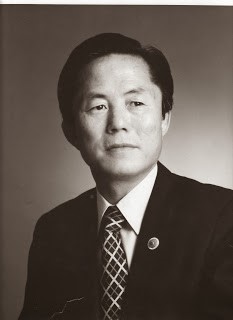

POLITICAL INFLUENCES
Advantages & Disadvantages
General Choi was a “founding member” (#44 of 110 Officer Candidates) of south Korea’s Armed Forces when he graduated from their first Military Academy in 1946. In 1962 a year after a military coup (May 16th 1961 Revolution) took place Mr. Choi was assigned to Korea’s Diplomatic Foreign Service Corp and sent to Malaysia as the 1st Korean Ambassador to that Southeast Asian Country. His involvement and work with personally introducing Taekwon-Do there, gave rise to Malaysia being called the “2nd Home of Taekwon-Do.” Ambassador Choi’s power he held and yielded in these high-level government capacities afforded him the opportunities to become the most significantly important and influential person in Taekwon-Do’s creation, development and global dissemination.
The tragic division of Korea by outside forces after the end of the Second World War has adversely impacted Taekwon-Do and General Choi as well. General Choi was a military senior of General Park Chung-Hee, whose Army serial number was 166, graduating from the 2nd Academy. Early on in Park’s military service he was charged with being both a communist and a Japanese collaborator. During the Colonial Occupation Park volunteered to join the Imperial Army of Japan and achieved the rank of Lieutenant. During Park’s court martial proceedings General Choi served on the Military Tribunal that convicted him. Park’s life was spared when he cooperated and informed on other members. The outbreak of the all out fighting of the Korean Civil War helped reinstate Park and salvage his Army career.
General Park led the military coup in 1961 in the name of the Army Chief of Staff, a Lieutenant-General Chang Do-Young, who General Choi supported. When it came to light that Lt. Gen. Chang was not leading the charge and was in fact deposed by Park, General Choi began his opposition to the rule of “his junior” who would become dictator. Since General Choi was not part of Park’s inner-circle, comprised of young commissioned officers of the 8th Academy and was born in the northern part of a then unified one Korea, he was not trusted. Park purged potential opponents by removing people from office, jailing some, while others suffered a worst fate. It was common to send some abroad, as was the case when General Choi was dispatched to Malaysia on a diplomatic assignment as the Korean Ambassador in 1962, returning by the end of 1964 after Park consolidated his power. Naturally one can see the root cause of the tensions between a dictator who yielded immeasurable power and a Patriot like General Choi, who eventually would lose his influence, as he was part of the process that sentenced a younger Park to death!
As time passed by, the tensions became so severe that General Choi was forced to flee to Canada to live a life in exile in 1972. That year has been recorded as the height of the brutal measures Park’s dictatorship employed. Once in Toronto General Choi relocated the ITF headquarters there with the consent and approval of the ITF Congress. Since he was outside of the immediate reach of the dictatorship General Choi raised his opposition voice. The military regimes used the power of the dictatorships to pressure those loyal Korean instructors of the ITF. The far-reaching pressure of the KCIA, as documented by extensive investigations by outside entities like the American Federal Government’s Senate, FBI and House Committees, also touched these ITF Masters and their families.
Eventually General Choi planned to go back to Korea after the Director of the KCIA shot and killed General Park in 1979. The plan involved going to both parts of Korea. However in the south another military coup resulted in continuing dictatorial rule that barred General Choi. In the north General Choi and the ITF’s 7th Demonstration Team was invited. The performances were well received and as a result the government in Pyongyang requested the ITF to send instructors to teach the “Original Taekwon-Do” there. This was a dream for General Choi and it allowed him to replenish his cadre of instructors with new Koreans, who along with their government’s support would help the ITF’s ongoing global dissemination of Taekwon-Do. Naturally this bonus came with a high price, as other Koreans used this to slander General Choi. However General Choi’s notable and honorable work resulted in him later on in his life in being nominated for the Nobel Peace Prize.
It is important to understand some of the political complexities and the context of the “Cold War” era, if one is to more fully comprehend and appreciate the enormous gift of Taekwon-Do that General Choi and Korea gave to the world. Without General Choi Hong-Hi, there would be no Taekwon-Do. All students of Taekwon-Do, be they ITF, WTF or independent should follow the many examples of General Choi. It is by knocking down barriers that General Choi never let get in his way, such as race, religion, creed, national boundaries, politics or ideology, that Taekwon-Do students can truly help “build a more peaceful world.” It is fitting that present day Taekwon-Do leaders should acknowledge the common roots, which ultimately lead to General Choi for all students of Taekwon-Do. Everyone should pledge mutual respect as well as cooperation moving forward. All students past, present and future should follow these examples started by General Choi.
